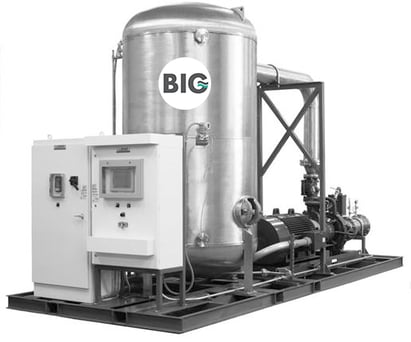
BlueInGreen—a water cleantech company based in Fayetteville, Arkansas—has steadily made a name for itself by providing award-winning solutions to a wide variety of clients in the biological, municipal and ecological treatment space. The Company’s highly efficient method for dissolving oxygen, carbon dioxide and ozone into water has saved end-users millions of dollars in water usage, chemical costs and energy consumption. Now, in the face of the current pandemic, BlueInGreen is working to save lives as well.
 As a result of the global SARS-CoV-2 outbreak, huge viral loads are present in the municipal wastewater of an infected population, and data support the notion that the virus is viable in the environment for prolonged periods under some conditions.
As a result of the global SARS-CoV-2 outbreak, huge viral loads are present in the municipal wastewater of an infected population, and data support the notion that the virus is viable in the environment for prolonged periods under some conditions.
To summarize the current situation, on March 5, 2020, the New England Journal of Medicine published a report documenting the first case of COVID-19 in the United States, including the presence of viable SARS-CoV-2 RNA in the patient’s feces. Since then, several other reports published have confirmed persistent viral shedding of SARS-CoV-2 in the stools of patients in China, proving that human waste from people with COVID-19 contains the virus that causes the disease. Then, on March 29, 2020, researchers from the Water Research Institute, Netherlands, published the first report of SARS-CoV-2 in sewage, documenting its presence in multiple domestic wastewater treatment (WWT) facilities during the early stages of the COVID-19 epidemic in that country. Specifically, the authors detected an abundant viral load in six of the seven municipal wastewater treatment facilities sampled. Preliminary research quantified the viral load with 10⁷ RNA copies/gram of wastewater measured one week after symptom onset. This decreased to 10³ RNA copies/gram three weeks after symptom onset, with viable Sars-CoV-2 present in samples with larger amounts of viral RNA. Although it is thought that municipal wastewater is unlikely to become a primary pathway for SARS-CoV-2, the authors note that “the increasing circulation of the virus in the population will increase the virus load into the sewer systems of our cities” and highlight the need for additional “information about the occurrence and fate of this new virus in sewage to understand if there is [a] risk to sewage workers.”
To clarify, there is still no scientific evidence to prove that the presence of the virus in sewage can cause COVID-19 by inadvertent ingestion or inhalation of aerosols containing droplets of contaminated sewage or even absorption through the mucous membranes of the eyes or openings in the skin. Nonetheless, the data are limited and the risk associated with this uncertainty is such that researchers and practitioners alike advocate an abundance of caution until more information is known about the potential harm to those operating WWT facilities. “The issue at the moment is uncertainty,” said Chris Milligan, CEO and Chief Engineer at BlueInGreen. “We just don’t know the risks, so municipal WWT workers should err on the side of caution.”
Professor Carlos Chernicharo, coordinator of the Federal University of Minas Gerais’s National Institute of Science and Technology in Brazil underscores the importance of care required by workers and researchers in the sector. “Professionals who work in the sanitary sewage area, such as those who operate collection networks and treatment plants and researchers who handle sewage samples, cannot give up measures— including the use of personal protective equipment—to avoid inadvertent exposure to sewage, even the inhalation of aerosols (very fine solid or liquid particles suspended in the air) to avoid contamination.”
It is well-known that there can be significant aerosol formation in a WWT plant from the various conventional methods of aeration: bubbles rising out the water from diffused or jet systems, surface mixers churning water and atmospheric air, as well as cascade systems, brush rollers and many other traditional aeration systems.
 “If research finds that inhalation of aerosols in the WWT setting is a pathway for the disease,” said Milligan, “then technologies that don’t splash or bubble up—like what we provide at BlueInGreen—will be of paramount importance.”
“If research finds that inhalation of aerosols in the WWT setting is a pathway for the disease,” said Milligan, “then technologies that don’t splash or bubble up—like what we provide at BlueInGreen—will be of paramount importance.”
Featuring a 98%+ gas-transfer efficiency rate, BlueInGreen’s SDOX® technology uses a pressurized approach to rapidly and efficiently dissolve oxygen in a closed, side-stream process. Unlike conventional treatment methods that promote aerosol formation in open environments—such as jet and surface aerators placed directly within treatment basins—the SDOX® super-saturates the water with oxygen in a closed, pressurized vessel at the molecular level in the side-stream before returning it to the bulk flow, preventing the production of bubbles or aerosols. Even in non-pandemic situations, it creates a much healthier environment for WWT workers. “We are in this together,” said Milligan. “Like so many others operating within essential industries, our team at BlueInGreen is working to provide solutions that limit the spread of the virus and improve the working conditions for, and the health and welfare of, essential workers.”
To learn more about BlueInGreen, go to https://www.blueingreen.com/

